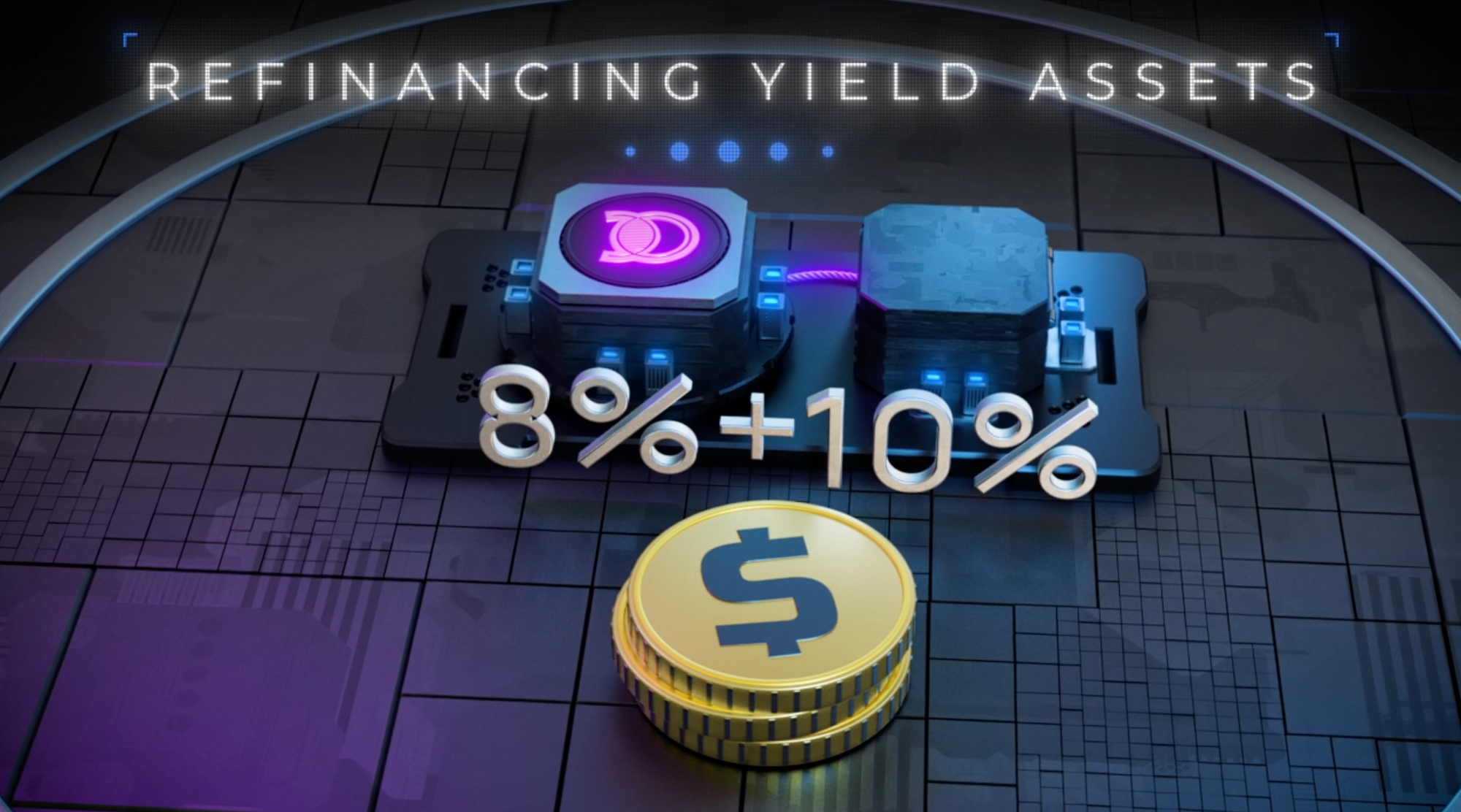Refinancing Yield Assets

Traditional finance is often constrained by extensive regulations and the influence of intermediaries. Large corporations or privileged high net worth investors, benefit from opportunities such as refinancing of yield assets or real estate portfolios. The normal retail customer does not enjoy the same options as the more wealthy and privileged investor.
The Promise of Decentralized Finance (DeFi)
The vulnerabilities and inequalities inherent in the traditional financial system laid the foundation for the creation of Bitcoin and the emergence of decentralized finance (DeFi). Created as a response to the challenges in the conventional monetary framework, DeFi emphasizes transparency, reduces entry barriers, and operates without the need for intermediaries. The transition from traditional finance (TradFi) to DeFi represents an effort for a more inclusive finance model.
LSDFi Paradigm Shift
In the emerging world of DeFi, Liquid Staking Derivatives (LSDfi) have become a pivotal asset category. The true strength of LSDFi lies in its capacity to offer unmatched capital efficiency without the typical risks associated with traditional investments. Taking Ethereum as a prime example, LSDFi transforms passive holding into an active yield-generating strategy. When users stake ETH, they aren't merely preserving their position. Instead, they are harnessing the dual benefit of maintaining their staking position while also using their liquid tokens to actively generate additional yield, truly maximizing their asset's potential.
The Challenges in Web3 Yield Refinancing
In Web3, there are notable challenges to address. Users often encounter issues such as staking limitations, fragmented liquidity, infrastructure barriers, and less than ideal user experiences. These factors hinder the transition for users coming into Web3 as they’re met with subpar possibilities for refinancing their assets. Typically, once yield assets are staked, their utility ends there, restricting the capital efficiency of your liquidity. For instance, if you provide liquidity to a lending protocol, that becomes your sole yield source.
A New Era of Refinancing Yield Assets
Entangle's Liquid Vaults present a solution to the challenges in the Web3 space. These vaults can adapt to various applications, integrating everything from Lending & Borrowing to Derivatives. Essentially, they cater to any protocol requiring extra liquidity, especially outside of DEXs and Bridges.
A notable feature of Liquid Vaults is their impact on yield dynamics. While users already get yields from DEXs, the vaults provide an avenue to earn from secondary protocols. For example, Derivatives Protocols usually give out 20-30% APY of their tokens to compete with DEX liquidity. With Liquid Vaults, this rate can decrease, making operations more sustainable.
The immediate advantage of the Liquid Vaults is clear: to retain and boost liquidity. Both DEXs and ecosystems benefit from more robust liquidity pools. For users, this means better capital efficiency and increased yields.
Secondary protocols also stand to gain. With more accessible liquidity from the vaults, they can grow their Total Value Locked (TVL) and diversify their services. This expansion can attract more users and solidify their market position.
In a rapidly changing environment, Entangle's Liquid Vaults offer a straightforward solution, bridging gaps and streamlining processes for a better decentralized experience.